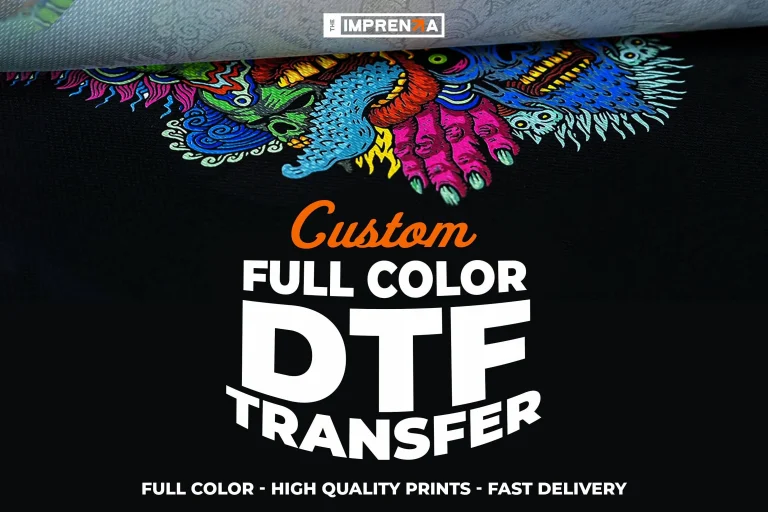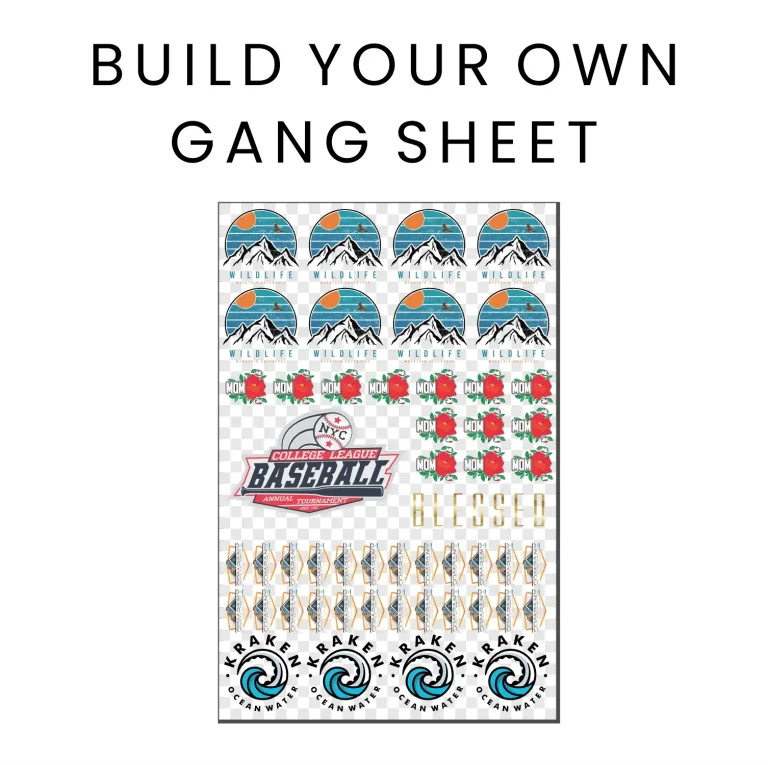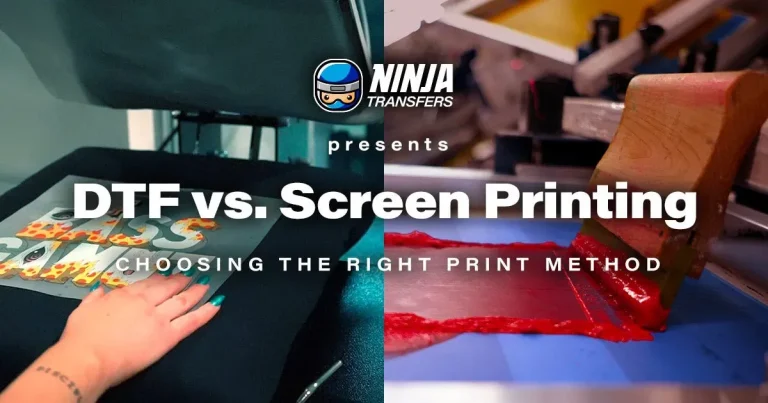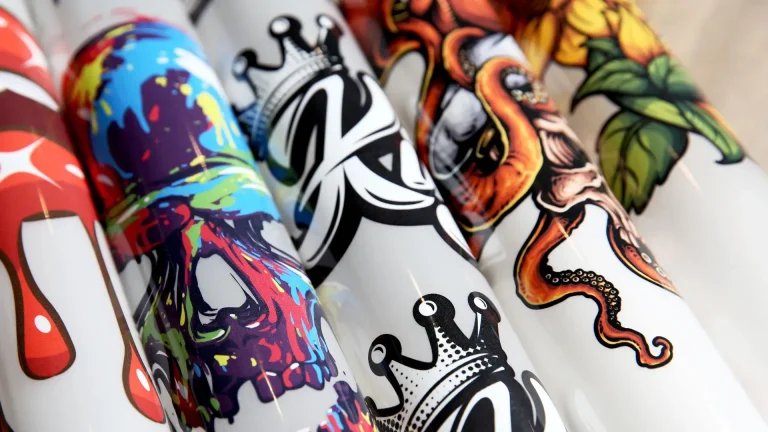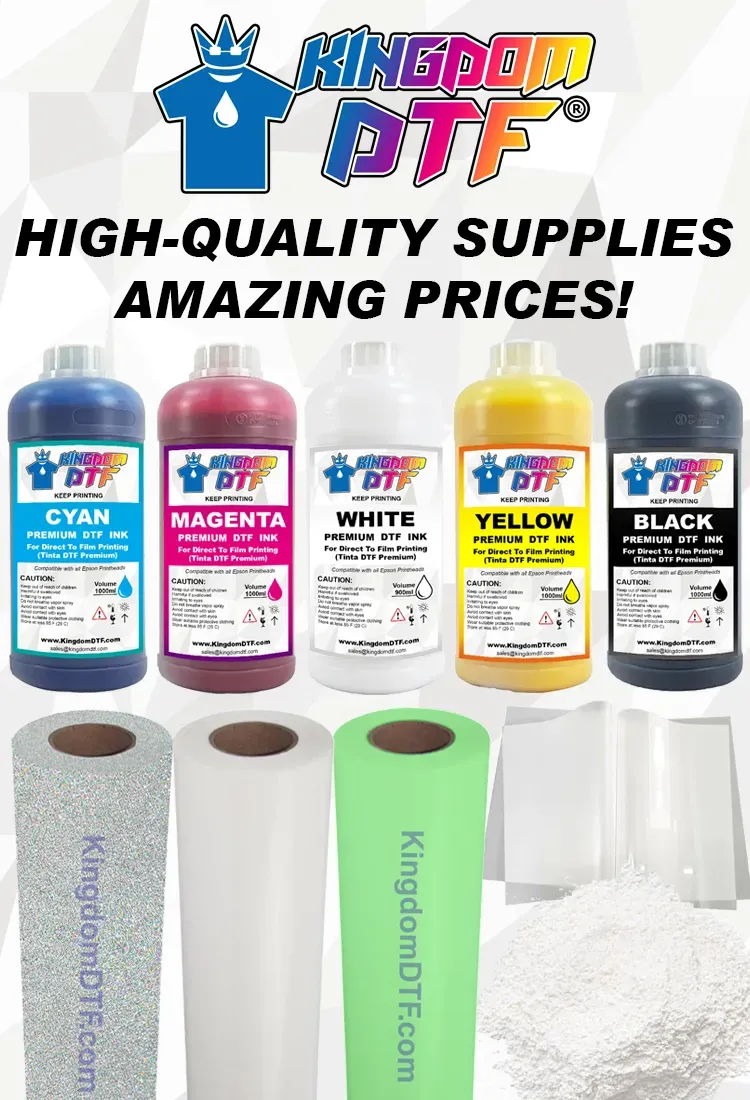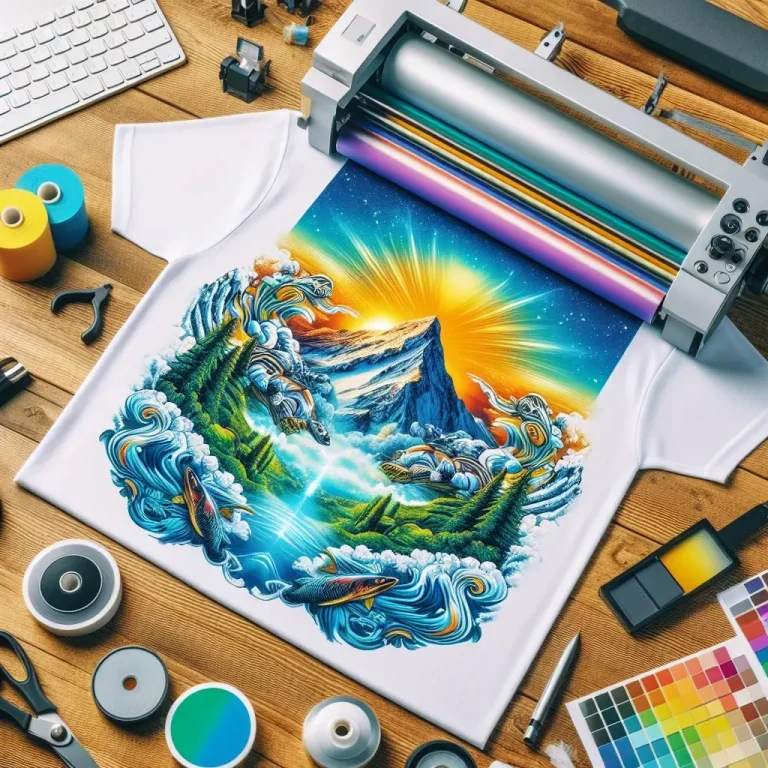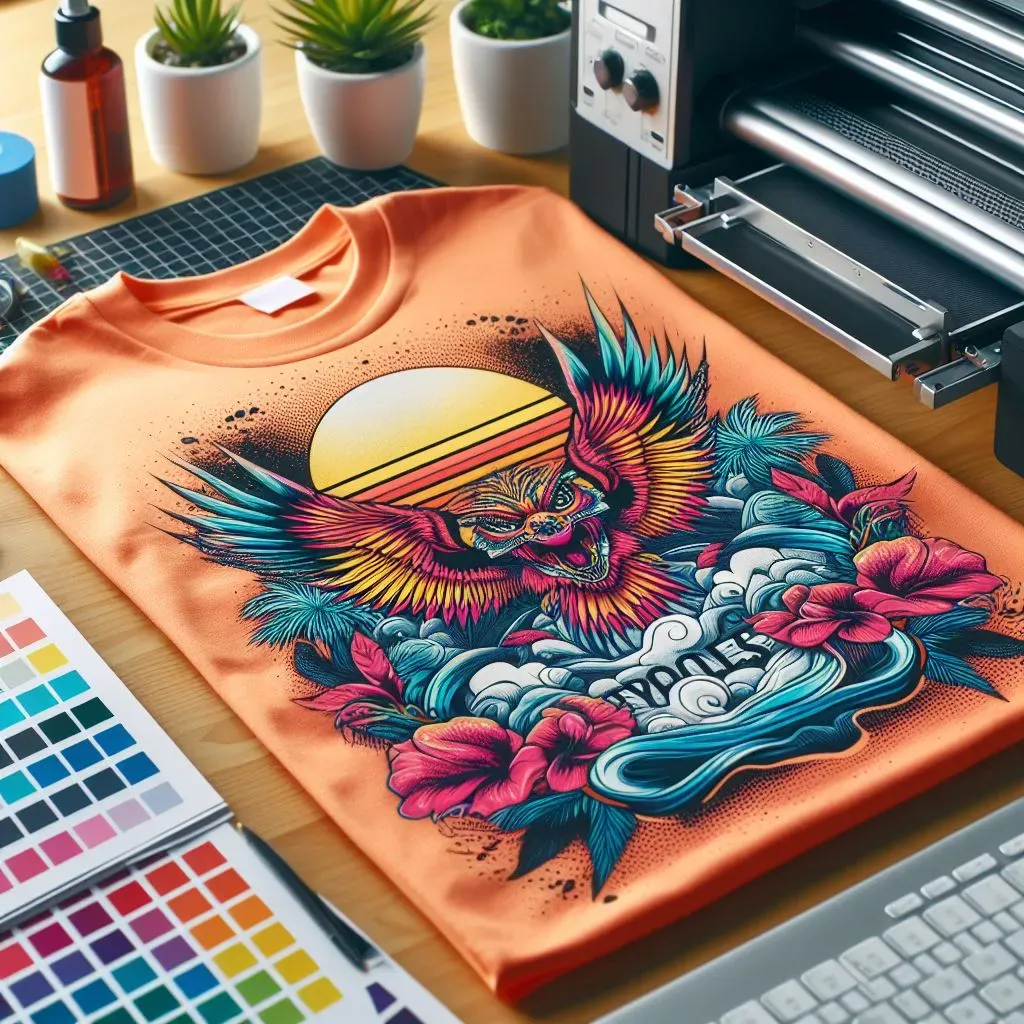
Getting Started with DTF Transfers opens the door to an exciting realm of custom apparel printing. As the popularity of DTF (Direct-to-Film) transfers surges, understanding the essential DTF printing supplies and equipment becomes crucial for anyone looking to create vibrant, long-lasting designs. With the best DTF printers and accurate application techniques, you can bring your creative visions to life on various fabrics. This guide not only outlines how to use DTF transfers effectively but also highlights tips for achieving flawless results that will impress customers or elevate your personal projects. Dive into the world of DTF and discover how this innovative method can transform your custom printing endeavors.
Embarking on the journey of Direct-to-Film transfers permits creators to explore new horizons in fabric printing. This contemporary technique allows for bright, durable prints that adhere expertly to garments, making it a desired choice in the custom apparel industry. By utilizing specialized DTF equipment and high-quality materials, you can easily replicate intricate designs on a wide array of textiles. Understanding alternative terms such as DTF printing can help clarify your research as you seek the best strategies for success. Whether you’re a seasoned professional or a newcomer eager to learn, mastering this printing process fosters creativity and innovation in every project.
Getting Started with DTF Transfers: Essential Equipment and Supplies
Embarking on your DTF transfers journey requires the right setup, as the quality of your equipment directly impacts the outcome of your custom apparel printing projects. The first item to consider is a reliable DTF printer. While there are various brands available, Epson printers are often hailed as some of the best DTF printers due to their compatible pigment inks, which yield vivid colors and excellent durability in prints. To complement your printer, quality DTF transfer film is also vital. This specialized film holds the ink securely during printing and successfully transfers the design to your fabric. The right film, specifically labeled for DTF applications, ensures color integrity and adherence throughout the printing process.
In addition to the printer and film, another essential component of your setup is adhesive powder. This powder works as the bonding agent that keeps your printed design attached to the material after heat pressing. Opting for high-quality adhesive powder guarantees that your artwork remains vibrant after multiple washes. Lastly, a dependable heat press machine is crucial for the final application of your design. When choosing a heat press, make sure it is adjustable for both temperature and pressure, as these factors greatly influence the adhesion of the design to the fabric. Together, these essential supplies create a solid foundation for successful DTF printing.
Understanding the DTF Transfer Process
The process of DTF transfers can be broken down into several straightforward steps that help ensure a smooth workflow. First and foremost, preparing your design is crucial. This involves utilizing graphic design software to optimize the file’s resolution, colors, and dimensions specific to your DTF printer settings. It is advisable to arrange your artwork properly as DTF printing requires the design to be mirrored before printing onto transfer film. Taking these preparatory steps seriously ensures that your designs will turn out as envisioned once applied to the garments.
Once your design is ready, the printing phase comes next, where you’ll set the DTF printer to the appropriate settings. It’s essential to have a grasp of the printing parameters; ensuring that your design is properly aligned on the film and resonates with the required color profiles is key. Upon finishing the print, you must apply the adhesive powder while the print is still warm, creating an efficient bond. After allowing it to cool, the next critical phase is heat pressing, which solidifies the transfer onto the fabric, ensuring durability and resistance to wear. Following these systematic steps will yield vibrant and long-lasting customized apparel.
Maximizing the Quality of DTF Transfers
Achieving the best results with DTF transfers hinges on several best practices that ensure your prints maintain high quality and durability. Firstly, calibrating your equipment before each usage is essential. This includes adjusting the printer settings to correspond accurately with the DTF transfer film you are using. Incorrect calibration can result in smeared prints or poor color reproduction, leading to disappointing results. Regular maintenance of your heat press is equally important, as residue buildup can affect the pressure and heat distribution, which are critical for a successful transfer.
Another effective strategy is to experiment with various settings depending on the type of fabric being used. Each fabric may have unique requirements regarding temperature and pressure during heat application. By testing these variables, you can pinpoint the ideal conditions for achieving the sharpest and most durable designs. Also, keep tabs on industry trends and improvements in DTF transfer technology, as this field is continually evolving. Subscribing to industry publications and forums is a great way to remain informed and gather tips from peers in the field of custom apparel printing.
Best Practices for Using DTF Transfers
Using DTF transfers effectively involves adhering to several best practices that can significantly enhance your experience and outcome. First, always ensure your printing surfaces are clean and free from debris. This not only keeps your heat press in top condition but also prevents any unwanted blemishes on your finished design. Additionally, taking the time to pre-press your fabric for a few moments helps remove moisture and ensures a smoother application for your DTF designs. This simple step can drastically improve the adhesion quality, resulting in a more robust and professional-looking final product.
Moreover, avoid overcrowding your designs on the film as this can lead to complications during the transfer process. Each design should have enough space to breathe, allowing the adhesive powder to adhere properly and the heat to distribute evenly. Furthermore, always follow the manufacturer’s guidelines for both films and powders, as they provide specific instructions regarding temperature, pressure, and timing for optimal results. By adopting these practices, you’ll not only improve the quality of your transfers but also streamline the overall custom apparel printing process.
Choosing the Right DTF Supplies
When navigating the realm of DTF printing, selecting the right supplies is paramount to your success. Not only do you need a high-quality DTF printer, but the choice of transfer films can significantly affect the quality of your final product. Films designed specifically for DTF applications are preferred, as they provide enhanced adhesion and better color vibrancy when the design is transferred onto fabrics. It’s also essential to procure adequate amounts of adhesive powder; a premium grade ensures your designs remain intact after multiple washes and wears.
In addition to films and powders, also consider sourcing your supplies from reputable vendors and suppliers, like specialty print supply stores that offer comprehensive selections tailored for DTF printing. Buying from established retailers ensures that you receive high-quality products tested for performance, leading to better transfer results. Furthermore, engaging with local craft stores may also yield great finds and additional supplies that enhance your DTF printing journey. Building a reliable arsenal of DTF supplies will empower you to explore endless creative possibilities in custom apparel.
Where to Find Top-Quality DTF Printing Supplies
Finding the right DTF printing supplies can be a vital step in your custom apparel journey. Various online platforms such as Amazon and eBay feature a wide range of DTF printers, transfer films, and adhesive powders. These platforms often come with customer reviews and ratings which can guide you in selecting supplies known for their effectiveness and quality. Make sure you read through reviews carefully, as they provide insights on how particular products perform in practical applications.
Alternatively, you might explore specialty print supply stores which often carry equipment and materials specifically designed for DTF printing. These designated retailers frequently have knowledgeable staff who can offer valuable advice and recommendations tailored to your needs. Visiting local craft and hobby shops might also yield beneficial supplies, as many of these stores are increasingly stocking items due to the rising popularity of DTF technology. By utilizing these resources, you’ll be well-equipped to source the best materials for your DTF transfer projects.
Frequently Asked Questions
What equipment do I need to get started with DTF transfers?
To get started with DTF transfers, you will need a specialized DTF printer, DTF transfer film, adhesive powder, a heat press machine, and pre-pressing supplies. These items are essential for achieving vibrant and durable prints on fabrics.
How do I choose the best DTF printer for my needs?
When selecting the best DTF printer, consider factors like print quality, brand reputation, and compatibility with pigment inks. Look for printers that are highly recommended in the DTF community, such as those from Epson, to ensure you get reliable results.
Can I use regular ink and film for DTF printing?
No, you should not use regular ink and film for DTF printing. DTF transfers require specific DTF transfer film designed to hold the ink and specialized pigment inks to ensure vibrant and durable designs on fabrics.
What are some tips for how to use DTF transfers effectively?
To use DTF transfers effectively, calibrate your printer and heat press regularly, experiment with different settings based on fabric types, maintain cleanliness in your workspace, and keep up to date with the latest DTF technology advancements.
Where can I find quality DTF printing supplies?
Quality DTF printing supplies can be found at online retailers like Amazon and eBay, specialty print supply stores, and local craft and hobby stores. Look for reviews and product specifications to ensure you’re purchasing high-quality materials.
Do DTF transfers work on all fabric types?
Yes, DTF transfers are versatile and can be used on a variety of fabric types, including cotton, polyester, and blends. This makes them an excellent choice for custom apparel printing, regardless of the fabric composition.
| Key Points | Details |
|---|---|
| What Are DTF Transfers? | A method of printing designs onto a special film, which is applied to fabric using heat and pressure. |
| Why Choose DTF? | Offers vibrant colors, durability, and versatility across different fabric types. |
| Essential Equipment and Supplies: | DTF Printer, DTF Transfer Film, Adhesive Powder, Heat Press Machine, Pre-Pressing Supplies. |
| Basic Steps to DTF Transfers: | Prepare Design, Print, Apply Adhesive Powder, Shake Off Excess, Heat Press, Peel and Finalize. |
| Tips for Best Results: | Calibrate Equipment, Experiment with Settings, Keep Clean, Stay Updated. |
| Where to Buy Supplies: | Amazon, eBay, Specialty Print Supply Stores, Craft and Hobby Stores. |
Summary
Getting started with DTF transfers opens up a vibrant world of custom apparel printing. This innovative technique utilizes a special film for creating vibrant designs that adhere firmly to various fabric types. By understanding the essential equipment like DTF printers and heat presses, following the detailed steps of the transfer process, and applying tips for best results, anyone can successfully engage in DTF printing. It’s an exciting avenue for both hobbyists and business owners alike, offering versatility and durability that can enhance any apparel project. With the right supplies from reputable sources, your journey into DTF transfers can lead to creative opportunities and remarkable designs that stand out.

